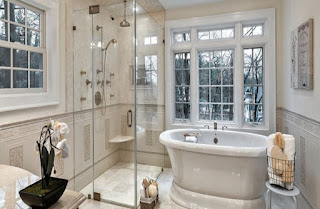Underfloor Heating
Romans created
floors that were built on piles made of bricks. A fire would be lit at one
end of the room by the wall. Flues would draw the hot air from the fire
under the floor to the walls. The hot air would heat up the bricks, and then
the heat would be transferred into the room. These walls would also be
warmed as the hot air was drawn up Underfloor heating repair.
This method of
heating was very efficient. A small furnace is all that was needed to heat the
house. Although this system was initially only for wealthy people, it
quickly became popular and can be found in many public buildings. This
system was used by the Romans throughout their Empire.
In England, a
newer form of underfloor heating was developed in the 1960s. Although it
was popular, this electric system proved costly to operate and difficult to
manage. When electricity became cheaper, the heat was kept in reserve
overnight. The floors became too hot in morning, and the evening was
cold. Warm floors are appealing to us now. Modern underfloor heating
systems are reliable, invisible, discreet, discrete, and non-obtrusive. They
can also free up valuable wall space. It is even considered a more efficient
form of heating. Asthma sufferers and people with breathing difficulties
can benefit from the reduction of dust particles in conventional convection
heating systems. Radiant heat is available through underfloor heating.
The need to have
radiators in rooms with this heating system installed would be eliminated. This
eliminates the possibility of elderly and young children being scalded by a
radiator or falling into it. They are not too hot to burn, but they are
comfortable to walk on. Heating hidden under the floor can also be a
benefit. The wall space is now freed up. This is a popular choice for
those who want to achieve a "minimalist" effect.
The whole floor
acts as a radiator. However, the floor's size is greater than a radiator so it
doesn't need to heat as much. Your feet will feel slightly warmer because
the floor is warmer than the air in the room.
According to
general statistics, if the floor temperature is 21 degrees Celsius, the room
temperature at 160 cm height would be 19 degrees. There are two types:
electric (dry) and warm water (wet). It can heat a room as well as the
floor with thermostatic control and timers.
In the
beginning, kitchens, bathrooms, and conservatories were the most popular places
to install this type heating. This was because it was common to have tiled
floors in these rooms. These floors could be very cold to walk on in the
winter months. It was appealing to be able have a warm tiled
flooring. These rooms now have the option to have underfloor heating, but
it can also be installed throughout the house.
It is very
popular for self-builders and new constructions. It's also being used in
extensions. It's a smart idea to plan ahead and install your underfloor
heating before new floors are laid.




Comments
Post a Comment